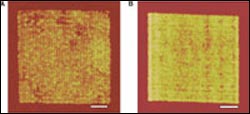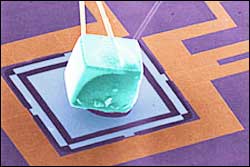This area deals with the fundamental laws and building blocks of nature and how they interact, the properties and the behavior of matter, and research into space and time and their structures.
innovations-report provides in-depth reports and articles on subjects such as astrophysics, laser technologies, nuclear, quantum, particle and solid-state physics, nanotechnologies, planetary research and findings (Mars, Venus) and developments related to the Hubble Telescope.

JLab, College of W&M researchers study radiation blockers while conducting nuclear imaging of Iodine uptake in mouse tissues
Scientists have found that a dose five times higher than the FDA-recommended dosage of potassium iodide in the event of a nuclear accident is needed to protect small animals effectively from radioactive iodide in medical imaging procedures. The long-term animal nuclear imaging project is being conducted by a collaboration of biology and physics researchers

A group of scientists at the University of California, Berkeley, is giving new relevance to the term “sharper image” by creating a superlens that can overcome a limitation in physics that has historically constrained the resolution of optical images.
Using a thin film of silver as the lens and ultraviolet (UV) light, the researchers recorded the images of an array of nanowires and the word “NANO” onto an organic polymer at a resolution of about 60 nanometers. In comparison, curren

Chip-scale refrigerators capable of reaching temperatures as low as 100 milliKelvin have been used to cool bulk objects for the first time, researchers at the National Institute of Standards and Technology (NIST) report. The solid-state refrigerators have applications such as cooling cryogenic sensors in highly sensitive instruments for semiconductor defect analysis and astronomical research.
The work is featured in the April 25, 2005, issue of Applied Physics Letters.* The NI

An X-ray technique developed by physicists at the National Institute of Standards and Technology (NIST) is helping to improve the design and energy efficiency of the bright white lights often used to illuminate stadiums, roads and many other settings.
High-intensity gas discharge (HID) lamps produce 26 percent of the nation’s light output, but, as a result of their high energy efficiency, consume only 17 percent of the electricity used for lighting. Continuing improvements

Striking Image of Nebula N214C taken with ESO’s NTT at La Silla
The nebula N214, a large region of gas and dust located in a remote part of our neighbouring galaxy, the Large Magellanic Cloud, is a quite remarkable site were massive stars are forming. In particular, its main component, N214C (also named NGC 2103 or DEM 293), is of special interest since it hosts a very rare massive star, known as Sk-71 51 and belonging to a peculiar class with only a dozen known members in t

New data from the Department of Energy’s Jefferson Lab shows the pentaquark doesn’t appear in one place it was expected. The result contradicts earlier findings in this same region and adds to the controversy over whether research groups from around the world have caught a glimpse of the so-called pentaquark, a particle built of five quarks.
Researchers in Jefferson Lab’s CEBAF Large Acceptance Spectrometer (CLAS) collaboration took data with a high energy photon beam on a liquid hydrogen